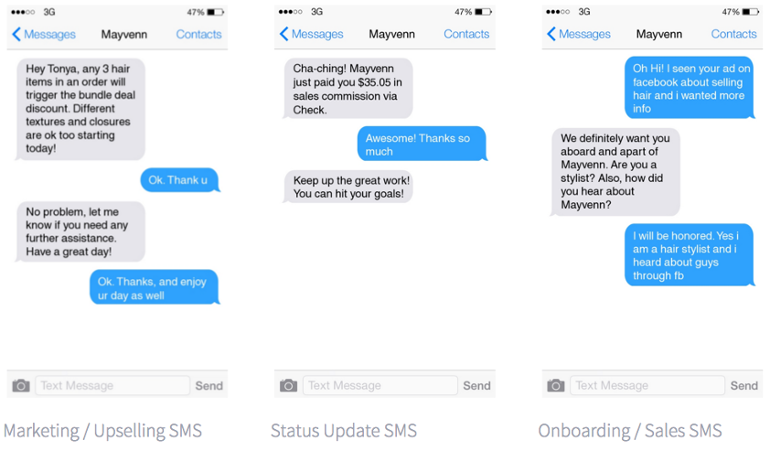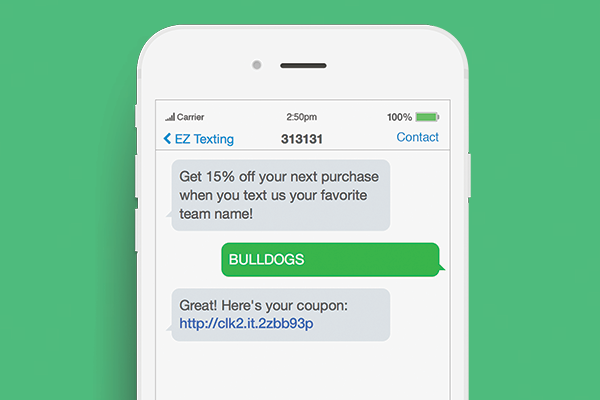Whether you should start texting your customers is a question that comes up regularly among marketing professionals. At first blush, it seems a little odd given how many other channels there are. However, it also offers various benefits you simply can’t get using other methods.
If you are wrestling with this question, this guide will help. We look at the pros and cons of texting and then provide some tips for communicating with your customers using this method. Texting might be an old approach to getting in touch, but it remains incredibly popular and highly effective.
The Pros Of Texting Your Customers
Here are some of the pros of texting your customers instead of calling or emailing:
Better Customer Service
One benefit of texting is that it may offer some of your customers better service than conventional communication approaches. This method enables rapid resolution, but it may also be the preferred way of talking for many customers. Remember, many people are shy or scared of talking to a sales representative or an agent directly. Texting makes them feel more comfortable.

Customers are also more likely to receive texts than other forms of communication, which remind them of upcoming appointments or other service perks.
Direct And Personal
Another benefit of texting is that it is direct and personal. Unlike email, texting is less likely to get buried under a mountain of spam. Companies can only text their customers with their permission. Users must sign up for a service before receiving text messages.

This fact automatically makes this communication method more potent. While customers constantly get unsolicited emails, they are less likely to get texts from people they don’t recognise or know.
Integrates With Existing Communication Channels
Another perk of texting your customers is that it integrates with existing website chat software. You can get messages sent to a central hub where agents can process them through a single tool instead of switching between platforms, which is common with email.
The most advanced systems let you collate all text messages from your website, SMS, and chat apps into one piece of software. Anyone on your team can then view call histories and respond to clients or customers.
High Open Rates
Finally, texting offers higher open rates than other channels. Customers are much more likely to see your communications.

Estimates suggest that text message open rates are around 98%. That compares to just 20% for emails. These high open rates mean that your communications are much more likely to have the impact you want. Customers are more likely to see their appointment times or digest marketing information that could benefit them.
Cons Of Texting Customers
Of course, there are various cons to texting customers:
Limited Message Formats
You can really make many adjustments to standard message formats when using SMS. While you can sometimes include images, you can’t really play around with the messaging or branding like you can in an email, keeping it consistent with your brand theme and voice.
The good news is that tools are now available to configure website chat formats. You can change the colours, font size, and typeface, and even add images or advertising in real-time. Therefore, you can correct some of SMS’s limitations by recommending that customers switch to your website.
Limited Size
Text messages also limit the amount of information you can send to your prospects and customers. The average text message only permits 160 characters, which is as short as a traditional tweet (from the old days). That’s not much space.

You can stitch SMS together, and modern devices will do this automatically. But this adds to the unit cost of sending information. Therefore, companies try to limit ads to less than 160 characters, which might not be enough for many brands.
Intrusive
Lastly, some customers view text messages as intrusive. SMS blocking features exist, but they are limited. Plus, many consider their text message inbox to be a sacred space for friends and family, not corporations.
The best way to avoid this dilemma is to let your customers know you’re going to text them. Telling them in advance that this is what you are doing and explaining why you are doing it can be enormously beneficial.
Tips For Texting Your Customers
While texting offers various pros and cons, most companies still use it because it is such a powerful marketing tool. Texting messages directly to users’ inboxes can provoke a level of response and engagement that emailing or social media advertising simply can’t.

However, if you will use texting, you need to be absolutely clear on your strategy. Don’t fall into the trap of making mistakes that some brands do.
Be Clear And Concise
When writing any marketing text message, ensure you keep it short and sweet. Being concise helps you communicate your message and avoid wasting your customers’ and prospects’ time.
At the same time, don’t use any technical jargon or slang if it conflicts with your brand identity. It is much better to spill over two text messages than make them confusing by trying to shorten them.
Don’t add any annoying elements to the end of the message, like hashtags. These aren’t decorative and just make the message look unofficial or unprofessional, meaning users are less likely to take it seriously.
Offer Value
Whenever you write a text message to customers, ensure you add some sort of value. Don’t use it as a marketing vehicle without providing something in return. If you don’t, prospects are more likely to block you.

Avoid the temptation to send them spam that doesn’t offer benefits. Even if they seem to be getting something on the surface, they will soon figure out there is no value in your communications and block you.
Let Them Opt Out
It’s also a good idea to provide an option for customers to opt-out so that they don’t have to receive your messages forever, even if they don’t want them. You want to make it easy to backtrack. Once customers know they can block you whenever they want, it has the interesting psychological effect of making it more likely they will open and engage with your communications.
Break Your Audiences Into Segments
You should also explore the possibility of breaking your audience into segments and sending relevant communications to each subset. For example, if you have two types of customers, they won’t appreciate receiving the same message. Therefore, smart brands are tailoring text messages to the recipient.

If you struggle to figure out what groups your customers fall into, research. Find out what they want. If it differs significantly between various categories, tailor your text messages accordingly.
Personalise Your Messages
You can also add personalisation in other ways. Some companies tailor their communications to their customers’ personalities. They adapt to their characteristics. Others include details imported automatically from their CRMs.
Get Permission First
Finally, you should always get permission to send customers text messages before doing it. Ask them to voluntarily provide their phone number. Explain what it means, such as sending them marketing emails.
Getting permission makes it more likely that your audience will open your marketing communications instead of deleting them immediately. It also means they are interested in receiving communications from you. This reduces the risk of wasting money sending messages to people who don’t want to consume your services.
Business Considerations Before Sending Messages To Customers
Before you send messages to an individual customer, you’ll need to consider the following:
- Work out whether the channel is suitable for your customers. For example, it could be an excellent option for younger audiences but not as effective for older clients.
- Double-check your texts to ensure they make sense to people who don’t understand jargon. Try to avoid unclear abbreviations that might confuse you.
- Add opt-in and opt-out mechanisms to the bottom of text messages, instructing people to stop receiving them if they are no longer helpful. This tactic helps you because you no longer need to pay to send messages to individuals who are no longer receptive to them.
- Check that you aren’t violating any spam regulations or nuisance laws. Some customers may launch lawsuits if you don’t get their permission to text them.
Wrapping Up
Ultimately, whether you start sending text messages to your customers is a business decision. You need to weigh up the pros and cons and come to a final decision. Most businesses find the practice beneficial, especially when they combine it with modern tools. It can assist with marketing and operations, helping you work more efficiently.


